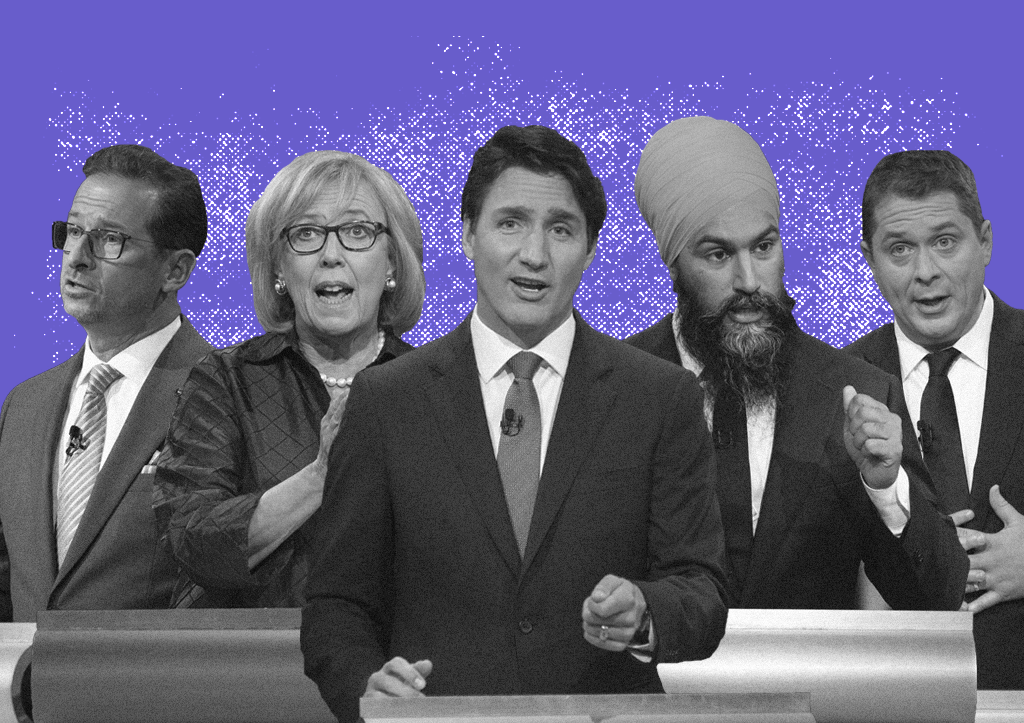Strategic voting happens in every election. And although there’s disagreement over how much it influences the outcome of an election, there’s no denying that it takes place.

It works like this: Let’s say you want to vote for Candidate A; they’re your first choice.
But, unfortunately, Candidate A has little chance of winning.
Your second choice is Candidate B, who is doing better in the polls.
And you really dislike Candidate C. So, to make sure they don’t win, you decide to vote for Candidate B even though they’re not your first pick.
In a recent Ipsos poll, 21 per cent of Canadians said they are voting for the party they are because they want to make sure another party does not win.
Strategic voting is a divisive issue. Proponents see it as a necessary way to make your vote count, whereas opponents claim that it hurts smaller parties and undermines the democratic process.
At the federal level, there are multiple left-leaning parties and only one mainstream right-wing party. This often causes a what’s called a “split vote” among progressive voters, which is why some on the left choose to vote strategically in national elections.
- Ontario premier calls cost of gas ‘absolutely disgusting,’ raises price-gouging concerns
- Conservatives ask interference inquiry judge to rule elections were flawed
- Former B.C. minister Mike de Jong seeks federal Conservative nomination
- Carbon rebate labelling in bank deposits fuelling confusion, minister says
“I think of strategic voting as an unfortunate thing that we need to do based on our broken voting system,” said Amara Possian, the campaign manager of Leadnow’s 2015 strategic voting campaign, Vote Together.
“You often end up in a situation where a political party will get 39 per cent of the popular vote, but because of how the votes have broken down riding by riding, they could end up with 100 per cent of the power.”
Federal elections in Canada use the first-past-the-post system, which means that the candidate who gets the most votes in a riding wins the riding and the party that wins the most ridings usually forms government.
According to an Ipsos poll taken after the 2015 election, one in three people said they voted to prevent another party from winning.
“Strategic voting can occur in other systems as well,” said Daniel Rubenson, an associate professor at Ryerson University who studies voter behaviour. “But there are incentives for strategic voting in the type of system that we have.”
In 2015, Liberal Party Leader Justin Trudeau ran on electoral reform, promising that the 2015 federal election would be the last to use the first-past-the-post system. But the Trudeau government abandoned that pledge while in office.
READ MORE: NDP sees support jump at expense of Liberals, Tories one week before election: poll
Both NDP Leader Jagmeet Singh and Green Party Leader Elizabeth May have spoken out against strategic voting during the current election campaign.
Trudeau has been doing the opposite on the campaign trail. The Liberals are warning progressive voters against voting for the NDP or Greens to prevent a split vote, which could aid the Conservatives.
Conservative Party Leader Andrew Scheer, meanwhile, deflected talk about how he might govern in a minority. Asked twice on Tuesday how he would respond in a minority situation, he would only answer that he intends to win a majority on Oct. 21.
“I feel like this idea of strategic voting has not allowed people to dream big,” Singh said on Sunday in his home riding of Burnaby South. “I want people to dream big. I want them to demand more and never settle for less, and that’s why I don’t believe in the idea of strategically voting.”
READ MORE: Singh speaks out against strategic voting, says to ‘never settle for less’
Strategic voting does hurt smaller parties, Rubenson said.
“There’s a kind of negative feedback loop that causes these parties to do less well, which increases the incentive for people to vote strategically, and then that causes the parties to do less well, and so on,” he said.
In order to vote strategically, you have to have some idea of how other people in your riding might vote.
“It’s important to understand who can win in your riding and one way to do that is to look at historic election results,” said Possian. “Another way to do that is to look at current riding-level polling. Current riding-level polling is really important because it gives you an accurate or a more accurate sense of what’s going on on the ground.”
But local riding-level polling is very expensive and therefore not usually not available to voters. In 2015, Vote Together crowdfunded local riding polling to help people vote strategically.
“A vote is a chess move not a valentine,” said Possian, quoting American author Rebecca Solnit. “We’re not voting because we love a particular party. We’re voting because we understand that this is a strategic decision and we are choosing who we’re going to organize with for the next four years.”





Comments